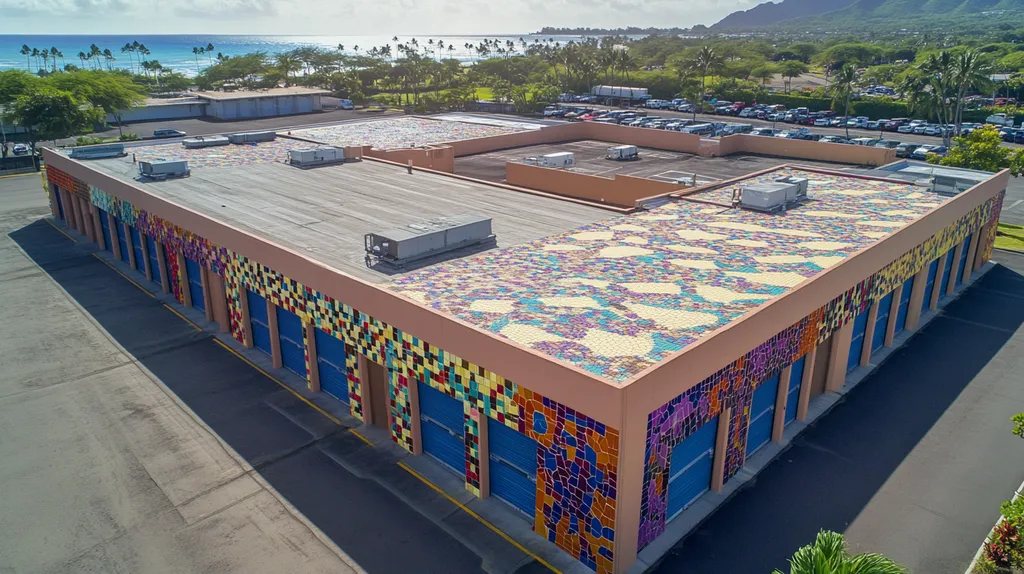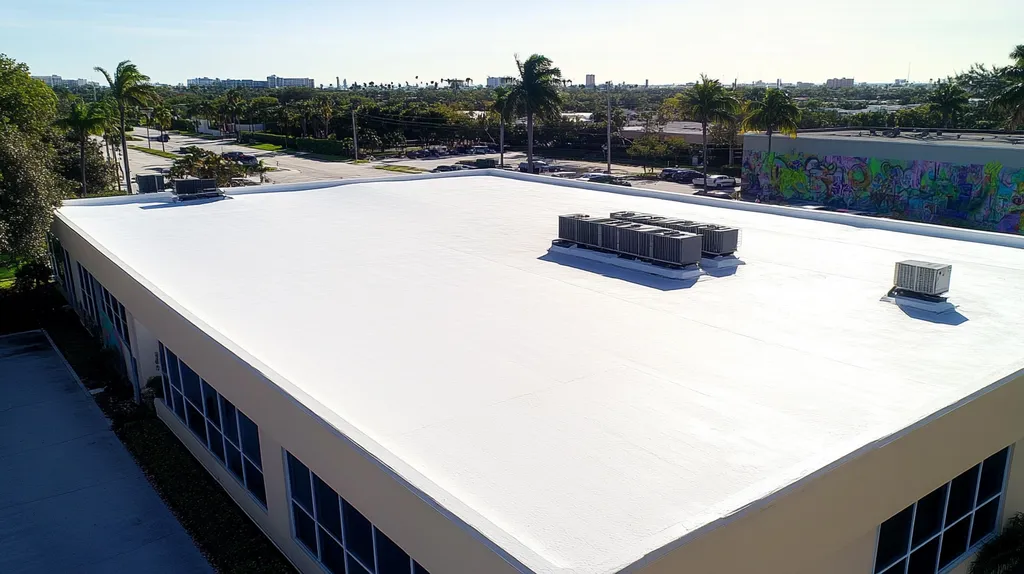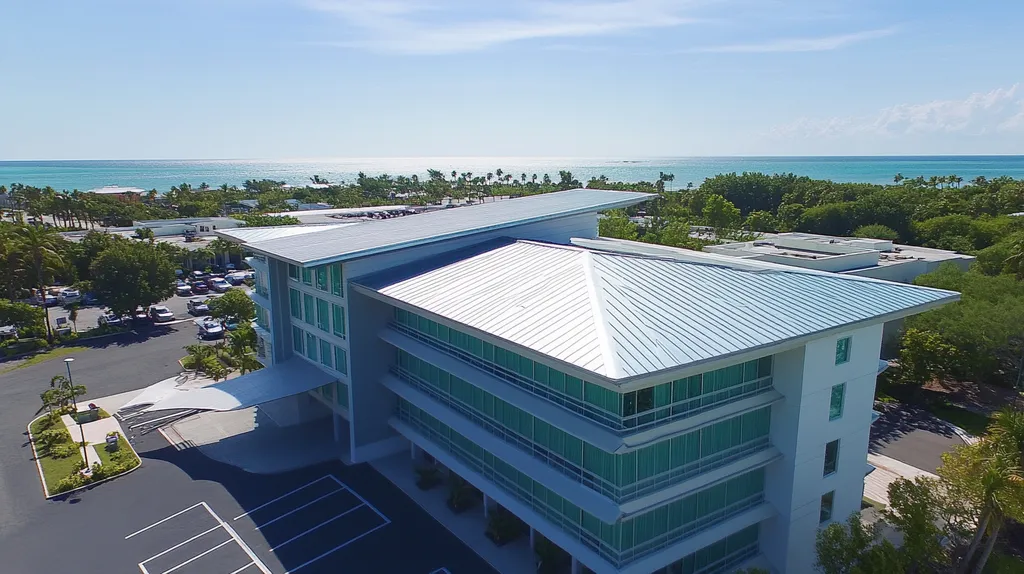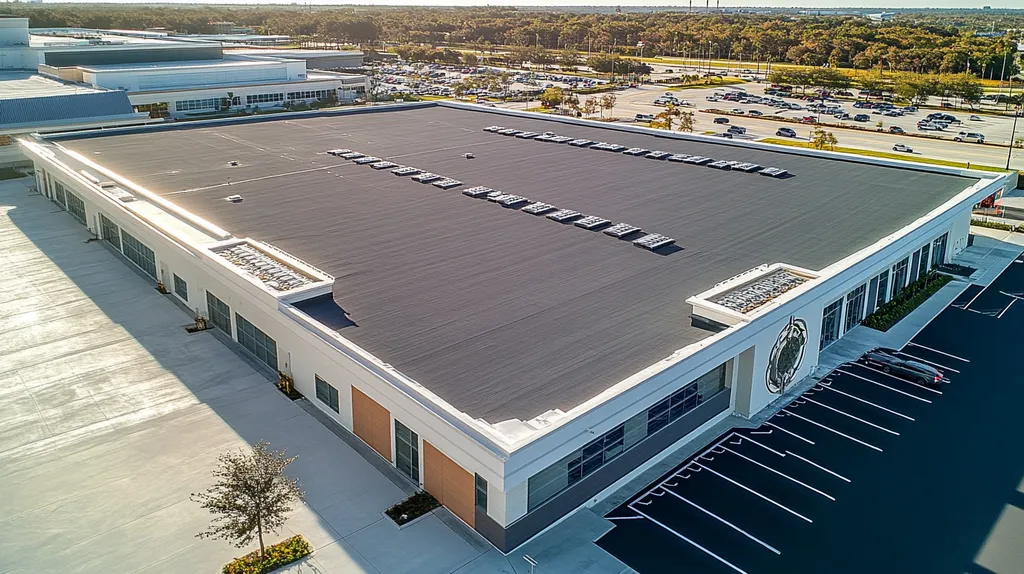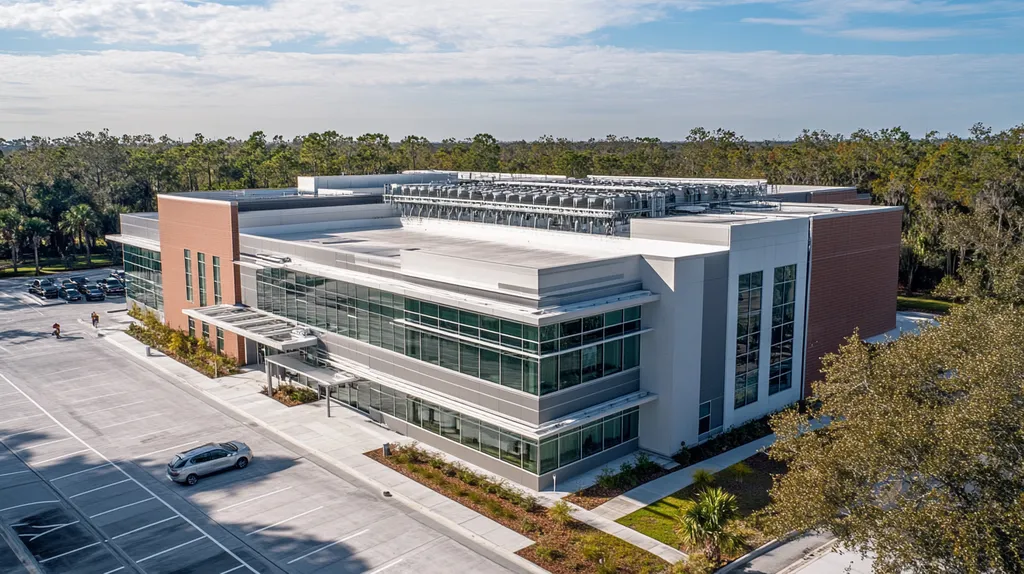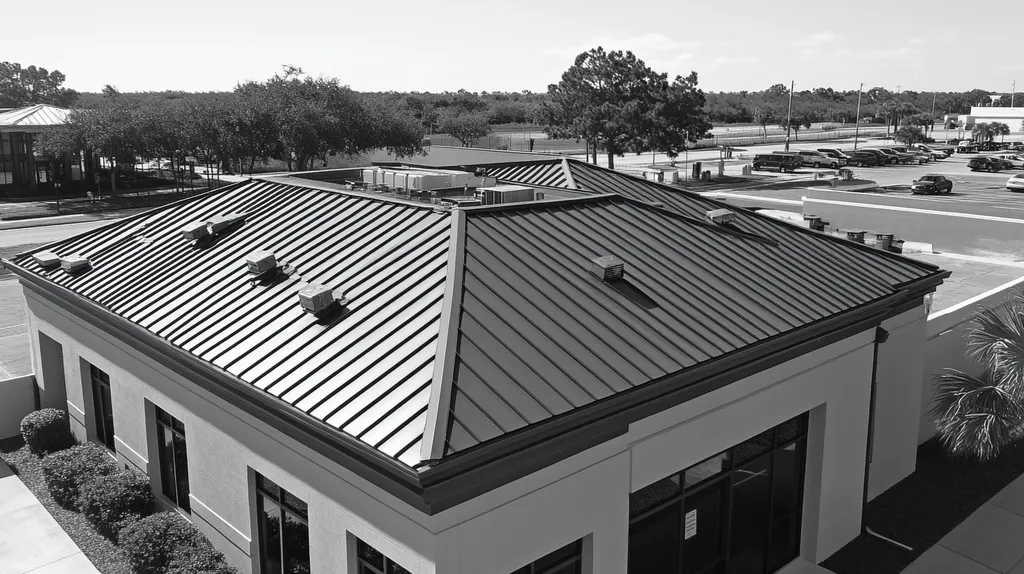The surge in commercial solar installations has created an urgent need for properly trained professionals, with industry reports showing that 40% of system failures stem from inadequate installation practices.
For commercial property owners and facility managers, the consequences of poorly trained installers extend far beyond immediate safety concerns to include reduced energy efficiency, warranty violations, and structural damage.
This comprehensive guide separates fact from fiction regarding solar installation training, examining common misconceptions while providing evidence-based solutions for ensuring optimal system performance and longevity.
SECTION 1: COMMON MISCONCEPTIONS
The rapid adoption of solar technology within commercial roofing represents a vital shift in how businesses approach energy sustainability. Yet, several widespread misconceptions act as roadblocks, stifling informed decision-making. For example, the idea that any electrician can install solar panels could lead to safety risks and inefficiencies. Similarly, misconceptions about maintenance and climate suitability deter potential adopters. Addressing these misunderstandings is essential for property owners and facility managers who aim to optimize their energy strategies.
Any Electrician Can Install Solar Panels
Many property owners mistakenly think that any certified electrician is qualified to install solar panels. While electricians do have expertise in electrical systems, solar installations necessitate specialized knowledge of both electrical and roofing systems. Lacking this insight, they may neglect critical aspects such as load distribution, roof integrity, and system orientation.
For instance, poorly installed solar panels can result in leaks or structural damage, leading to expensive repairs down the line. Additionally, ensuring compliance with local codes and safety standards requires specific knowledge that general electricians might not have. This is why many manufacturers advocate for trained installers who understand the unique complexities involved.
Choosing properly trained professionals ensures not only safety and compliance but also enhances system efficiency. When solar panels are installed correctly, they perform optimally, resulting in substantial energy savings. Property owners are encouraged to verify the certifications and training of installers before initiating projects.
Ultimately, opting for qualified solar installation experts is crucial for protecting investments and maximizing energy generation potential. Recognizing the specialized skills needed for this work is essential to successful solar panel installation.
Solar Panels Require High Maintenance
Another common misconception is that solar panels require extensive maintenance, which can discourage potential adopters. In fact, solar panels are designed to be low-maintenance and typically need very little upkeep. This misunderstanding can often lead property owners to worry about ongoing costs and complexities associated with solar technology.
Most solar panels only need occasional cleaning, which often happens naturally with rainwater or can be done with a simple rinse. Additionally, many modern solar systems come equipped with monitoring tools that notify owners of potential issues before they escalate. Routine check-ups can be carried out by professionals but are usually quick and straightforward.
On average, solar panels can last over 25 years, and warranties often cover a significant part of that lifespan. This longevity can result in lower maintenance costs compared to traditional energy sources over time. Moreover, the long-term energy savings from solar installations can outweigh any minor maintenance expenses.
In summary, fear of high maintenance costs should not deter property owners from exploring solar panel options. By understanding the true maintenance requirements, they can make more informed and confident decisions regarding sustainable energy investments.
Solar Panels Only Work in Sunny Climates
Many believe that solar panels are ineffective in cloudy or less sunny climates, which can deter commercial property owners in these areas from adopting solar energy. However, solar panels can generate power even in overcast conditions, although at a slightly lower efficiency than in bright sunlight.
Numerous regions with considerable cloud cover have successfully integrated solar technology, demonstrating its viability in various climates. Studies indicate that solar panels can produce significant energy in less-than-ideal weather, resulting in noticeable savings and a reduced carbon footprint.
Furthermore, advancements in solar technology have boosted the efficiency of panels under diverse lighting conditions. Modern panels are designed to capture diffuse sunlight effectively, thus maximizing energy production, no matter the climate. This technological progress highlights the importance of considering solar solutions, regardless of geographic location.
Therefore, dismissing solar energy based on outdated climate assumptions restricts opportunities for energy independence and sustainability. Property owners are encouraged to assess their local solar resources instead of relying on misconceptions that may not hold true.
SECTION 2: PRACTICAL IMPLICATIONS
The integration of solar systems on commercial roofs promises considerable advantages, but it is not without its risks. Studies indicate that improper installation can lead to reduced system efficiency and shorter lifespans for solar systems. With the increasing demand for renewable energy, it is crucial for property owners and facility managers to grasp the practical implications that accompany solar work on roofs. This section delves into system efficiency, safety risks, and the importance of compliance with building codes, emphasizing the pressing issues that must be addressed.
Impact on System Efficiency and Longevity
The effectiveness of solar systems heavily relies on the quality of installation. If the mounting is misaligned, shadows can obstruct sunlight, severely diminishing energy production. This misalignment not only undermines efficiency but also jeopardizes the return on investment for property owners.
Moreover, poorly installed solar systems run the risk of premature failures. For example, inadequate sealing can allow moisture to seep in, resulting in damage to both the solar components and the underlying roofing structure. This not only increases maintenance costs but also shortens the system’s lifespan.
Proper training in installation best practices equips professionals to optimize photovoltaic placement and foresee potential issues. Research suggests that well-installed systems can be up to 20% more efficient throughout their lifespan.
For commercial property owners, this translates into increased energy savings and a more sustainable return on their investment. Understanding the relationship between installer training and system performance is critical for sound long-term planning.
Safety Risks of Improper Installation
One of the most pressing concerns with solar installation is the safety of the workers involved. Untrained personnel may not follow established safety protocols, which can elevate the likelihood of job site accidents. Falls from rooftops are a significant cause of workplace injuries, underscoring the necessity of rigorous training.
Additionally, mishandling tools and materials poses serious risks. For instance, using unapproved mounting systems or safety harnesses can jeopardize both the integrity of the installation and the safety of the workers. Regular training can greatly minimize these hazards, fostering a safety-first culture.
Adhering to safety standards not only safeguards workers but also mitigates potential liability for property owners. Any incident can result in expensive legal issues and project delays, ultimately affecting timelines and budgets.
As solar adoption becomes more widespread, prioritizing safety through comprehensive training programs is essential. Investing in these programs yields significant benefits, reducing injuries and boosting employee morale.
Compliance with Local Building Codes
Adherence to local building codes is vital, serving as both a legal necessity and a means to ensure the safety and reliability of solar installations. Each municipality may have distinct regulations dictating how solar systems are to be installed on roofs. Failing to comply with these codes can result in penalties and, in some cases, forced removal of non-compliant systems.
Trained contractors are equipped to navigate these regulations effectively, ensuring that installations meet all necessary requirements. This proactive approach prevents costly revisions and shields property owners from potential legal complications.
Additionally, many incentive programs for solar installations are contingent upon compliance with specific codes. Non-compliance may result in missed financial benefits or tax credits, diminishing the project’s overall affordability.
For these reasons, comprehensive training in understanding building codes is paramount. It empowers installation teams, bolsters the credibility of roofing professionals, and promotes a seamless installation process.
SECTION 3: COST OF MISINFORMATION
The impact of misinformation in solar work on commercial roofs can be financially devastating. Studies indicate that inadequate training may lead to installation errors, costing property owners as much as 30% more in long-term energy expenses. Misunderstandings surrounding solar technology only exacerbate these issues, resulting in financial losses and operational inefficiencies. This section examines the significant financial consequences, missed energy savings, and increased risks of system failures that stem from relying on incorrect information.
Financial Consequences of Suboptimal Systems
Investing in solar systems without the right training can lead to poor installation practices that severely compromise performance. For example, improperly mounted solar panels can cause leaks, which result in expensive repairs. Reports show that roofs with inadequate solar planning often yield 15-20% lower returns on investment compared to those installed by properly trained contractors.
Moreover, financial losses can accumulate due to higher maintenance expenses and reduced energy generation. Systems not installed correctly may require additional investments to fix initial mistakes, which can strain budgets and impact the financial health of commercial properties.
With rising material costs in the industry, these financial repercussions highlight the necessity of proper training. Effective training ensures optimal system designs that provide financial benefits over the long term.
Ultimately, the cost of misinformation extends beyond the initial cash outlay; it can lead to persistent budgetary constraints and limit future investment opportunities. Owners must recognize that investing in qualified training is crucial for both solar technology and the long-term preservation of their roofs.
Missed Opportunities for Energy Savings
Misinformation can prevent property owners from realizing substantial energy savings associated with solar installations. Many stakeholders dismiss solar as a poor investment due to high upfront costs, overlooking the long-term financial advantages. In reality, proper training can help owners design their systems to maximize energy capture, resulting in significant reductions on utility bills.
Data indicates that businesses that work with trained professionals for solar installations can save up to 50% more in energy costs over the life of the system. Incorrect assumptions can lead to undersized or poorly configured systems that fail to meet energy needs effectively.
Additionally, many businesses miss out on financial incentives such as tax credits and rebates available for energy-efficient upgrades. Without proper understanding of these programs, these savings often go unclaimed, further emphasizing the dangers of misinformation in roofing practices.
To make informed decisions and unlock potential savings, property owners and facility managers must prioritize adequate training for solar installations. Recognizing the true value of trained expertise is essential for reaping the full benefits of solar energy.
Increased Risk of System Failures
The likelihood of system failures significantly rises when misinformation is prevalent. Incorrect installations not only reduce energy efficiency but can also lead to complete system breakdowns. For example, failure to ensure compatibility between roofing materials and solar components can create vulnerabilities, exposing solar arrays to potential weather-related damage.
Studies demonstrate that systems installed without proper training are 40% more likely to fail prematurely, resulting in costly repairs. Such failures disrupt energy production and can compromise roof integrity, causing even more complications down the line.
Misunderstanding routine maintenance needs can exacerbate these issues. Property owners may neglect essential inspections or upkeep efforts due to misconceptions about solar technology, resulting in prolonged downtimes and higher repair expenses.
To counter these risks, industry leaders must prioritize education and ongoing training. By fostering an environment of knowledge and best practices, facility managers can better protect their investments and ensure reliable system performance.
SECTION 4: REALITY CHECK
The rapid rise in solar installations on commercial roofs presents significant challenges for property owners. With projections from the National Renewable Energy Laboratory showing a sharp increase in solar energy adoption over the next decade, specialized training for installers has never been more crucial. Without equipping roofing professionals with the right skills and knowledge, businesses face potential safety hazards, increased costs, and damage to existing roofing systems. This section will explore the importance of specialized training, the critical nature of licensing and certification, and the versatility required in solar panel installations.
Specialized Training for Solar Installations
Specialized training is essential for safe and effective solar installations. Commercial roofs are intricate systems that demand careful management, particularly when integrating solar technology. Training programs focus on various roof types and materials, emphasizing best practices to prevent damage to existing roofs.
A crucial aspect of this training is understanding load calculations and weather resistance for solar panel placement. Faulty installations can result in leaks or structural issues, leading to costly repairs. Comprehensive training enables installers to anticipate these complications, significantly reducing risks for property owners.
As regulations related to renewable energy continue to evolve, ongoing education ensures that installers remain compliant with local and national codes. This knowledge not only safeguards the building but also enhances property value for future investments.
Ultimately, investing in specialized training is vital for roofing professionals. It ensures that installations are carried out efficiently, maintaining the integrity of commercial roofs.
Importance of Licensing and Certification
Licensing and certification play a pivotal role in ensuring quality in solar installations on commercial roofs. Many states mandate specific requirements for solar installers; failing to comply can lead to legal liabilities and financial repercussions. Licensed professionals are typically more familiar with building codes and safety regulations.
Certification programs also establish credibility and trust with property owners. They signify that the installer has undergone comprehensive training and is equipped to manage complex systems safely. This not only protects the property but also builds confidence in the investment.
Without proper licensing, unqualified individuals may perform installations, risking damage to roofs and leading to higher energy costs due to inefficient solar performance. For property owners, collaborating with licensed professionals is a fundamental risk management strategy.
Prioritizing licensing and certification delivers peace of mind. It allows commercial property owners to confidently ensure that their solar installations meet the highest standards.
Versatility in Solar Panel Installations
The versatility involved in solar panel installations underscores the necessity of training and certification. Different roof types—such as flat, sloped, or green roofs—require tailored installation methods. Specialized training ensures that installers are adept at adapting to these variations while upholding best practices.
Additionally, as the integration of solar panels with other roofing technologies becomes more relevant, installers need a solid understanding of both fields. For example, installing solar panels on a green roof requires knowledge to ensure these systems work together effectively.
This versatility not only opens new markets for roofing professionals but also maximizes energy production for property owners. Well-trained installers can customize solutions to meet the specific needs of each building.
In summary, qualified installers make informed decisions that enhance the performance and longevity of solar systems on commercial roofs. This comprehensive approach benefits both contractors and property owners, fostering successful projects over the long term.
SECTION 5: EVIDENCE-BASED ALTERNATIVES
With the increasing push towards renewable energy, commercial roofing professionals must adapt to the evolving landscape of solar installations. Many property owners hesitate, concerned that low-quality materials and ineffective systems may jeopardize their roofs. However, investing in high-quality solar panels, advanced battery storage systems, and tailored solutions for unique roof challenges can address these fears. This section will explore the compelling benefits these evidence-based alternatives offer to both property owners and facility managers.
Benefits of High-Quality Solar Panels
Choosing high-quality solar panels is essential for maximizing the lifespan and efficiency of solar energy systems. These panels typically incorporate cutting-edge technology that optimizes energy output and enhances durability against extreme weather conditions. For instance, reputable brands often provide warranties lasting up to 25 years, promising performance levels that budget options simply can’t match.
Moreover, investing in quality solar panels can significantly increase a building’s resale value. Properties equipped with efficient solar systems attract environmentally conscious buyers willing to invest more for sustainable solutions. As commercial real estate increasingly prioritizes sustainability, opting for reliable solar products can result in substantial financial gains.
Quality panels also minimize maintenance concerns. Inferior products often lead to frequent repairs and replacements, causing disruptions and incurring additional costs. In contrast, selecting top-tier options offers property managers peace of mind, knowing their investment is well protected.
In summary, prioritizing high-quality solar panels is a critical strategy for ensuring financial stability and operational effectiveness within commercial roofing systems.
Advantages of Battery Storage Systems
Battery storage systems are crucial for optimizing the use of solar energy in commercial properties. These systems allow buildings to retain excess energy generated during sunny days, making it available during peak demand periods, which effectively lowers energy costs. For example, businesses using battery storage can sidestep high utility rates during evening hours when demand peaks.
Furthermore, battery storage enhances energy resilience. In cases of grid power interruptions, facilities with robust battery systems can continue operations without disruptions. This reliability is especially important for industries that depend on a steady power supply, such as manufacturing and healthcare.
Modern battery solutions integrate seamlessly with existing energy frameworks. This adaptability enables facility managers to incorporate storage without complete system overhauls. Over time, this integration yields lower energy expenses and boosts operational efficiency.
In conclusion, investing in battery storage not only amplifies the benefits of solar panels but also positions commercial properties to tackle future energy challenges more effectively.
Customized Solutions for Complex Roofs
Each commercial roof presents unique challenges for solar installation, so tailored solutions are critical for effective integration. Factors such as roof age, structure, and slope necessitate specialized approaches. Customized solutions can include mounting systems designed to accommodate various roof types without risking the roofing integrity.
For example, ballasted mounting systems can secure solar arrays on flat roofs without compromising the membrane. This method minimizes leak risks while optimizing space use. Tailored designs also ensure solar panels work alongside existing HVAC systems or rooftop features, preserving their functionality.
Additionally, customized solutions can enhance energy production through careful panel placement. Strategic positioning, considering shading, sunlight angles, and roof layout, can greatly improve overall efficiency. This personalized approach not only maximizes energy output but also ensures compliance with local regulations and building codes.
Ultimately, offering customized solar solutions enables commercial roofing professionals to address the diverse needs of property owners while delivering effective and sustainable energy strategies.
SECTION 6: TEST AND VERIFY
In the rapidly changing world of commercial roofing, ensuring that solar installations function efficiently is essential. Without regular testing and verification, property owners risk not only financial losses but also disruptions in their operations. Industry studies suggest that consistent system evaluations can enhance the lifespan of solar installations by up to 30%. This section underscores the necessity of frequent inspections, performance monitoring, and client education to bolster the effectiveness of solar roofing systems.
Conducting Regular System Inspections
Routine inspections of solar installations on commercial roofs are crucial for maintaining their performance and longevity. Property owners should aim to conduct these evaluations at least twice a year, ideally in spring and fall. This proactive strategy helps identify potential problems before they escalate into costly repairs.
During these inspections, critical tasks include checking for any physical damage to panels, ensuring that connections are secure, and assessing roofing materials for signs of wear. Neglecting to address minor issues early can lead to reduced energy output or even complete system failure.
Partnering with certified technicians for more thorough evaluations is advisable. These professionals bring specialized tools that can measure electrical output and detect discrepancies that simple visual checks might miss. Early detection not only improves efficiency but can also save significant repair costs.
Regular inspections also provide an opportunity for ongoing education. Property owners can learn how various environmental factors, like weather and nearby obstructions, impact their solar systems. This growing knowledge helps in managing these valuable assets effectively.
Monitoring Performance Metrics
To ensure solar systems are performing as expected, consistent monitoring of key performance metrics is vital. Property owners should establish a set of Key Performance Indicators (KPIs) tailored to their operational goals. These could include energy production levels, system efficiency rates, and ongoing maintenance costs.
Investing in remote monitoring technology can significantly enhance this process. Such systems offer real-time feedback and alerts, enabling prompt action if performance dips are detected. For example, a sudden decrease in energy output may indicate an underlying issue that requires immediate attention.
Benchmarking against industry standards allows property owners to assess their system’s performance more accurately. Knowing how their installations stack up against similar systems can guide maintenance strategies and investment decisions.
Regular updates of performance reports foster transparency and accountability. These insights can be shared with stakeholders to reinforce the value of investing in solar technology.
Client Education and Maintenance Tips
Educating clients about ongoing maintenance is vital for the success of solar installations. Property owners and facility managers should be equipped with practical knowledge on how to care for their systems effectively. This includes recognizing early warning signs that may indicate potential issues.
Clients should understand how environmental factors, like the accumulation of debris or shading from adjacent structures, can impact system performance. Being informed helps to avert performance declines and extend the life of both the roof and the solar system.
Providing clients with a straightforward maintenance checklist can encourage proactive management. This checklist should highlight routine tasks such as clearing debris, checking electrical connections, and keeping drainage pathways clear. Implementing a simple maintenance routine can prevent more serious and costly problems down the road.
Offering regular workshops or informational sessions can further emphasize the importance of solar system maintenance. Engaging clients in discussions about their systems fosters a sense of ownership and accountability, ultimately ensuring ongoing efficiency.
Looking Ahead
With solar installations projected to triple on commercial buildings by 2030, the stakes for proper training have never been higher.
Industry data shows that up to 40% of system failures stem directly from inadequate installation practices, costing property owners millions in repairs and lost energy production annually.
The evidence is clear: successful solar integration demands specialized training, proper certification, and ongoing education to ensure safety, efficiency, and regulatory compliance.
Property owners and facility managers who partner with properly trained solar professionals can expect 20-30% better system performance and significantly reduced maintenance costs over the installation’s lifetime.
The future of commercial roofing is inexorably linked to solar technology – making proper training not just beneficial, but essential for long-term success.
FREQUENTLY ASKED QUESTIONS
Q. Can any electrician install solar panels on a commercial roof?
A. Many property owners mistakenly believe any certified electrician can handle solar panel installation. However, this work requires specialized knowledge of both electrical and roofing systems, which general electricians may lack. Hiring trained professionals ensures safety, compliance with codes, and optimal system performance.
Q. What are the safety risks of improper solar installation on commercial roofs?
A. Improper solar installations can elevate safety risks for workers, including falls and accidents. Untrained personnel may neglect safety protocols, leading to potential hazards. Rigorous training minimizes these risks, ensuring a safer work environment and protecting both the installers and property owners.
Q. How can misinformation affect my commercial roof’s solar installation?
A. Misinformation can lead to costly installation errors, increasing your overall expenses by up to 30%. Misunderstandings about solar technology may result in poor performance, reduced energy generation, and even financial losses over time. Accurate information helps protect your investment in renewable energy.
Q. Why is specialized training necessary for solar installations on commercial roofs?
A. Specialized training is crucial because commercial roofs vary significantly and require expert handling during solar installations. Proper training helps installers manage complex variables like load calculations and weather resistance, reducing the risk of leaks and structural damage. This protects your roof and ensures efficient energy production.
Q. What benefits do high-quality solar panels offer for industrial roofs?
A. High-quality solar panels enhance efficiency and lifespan for industrial roofs. They typically come with longer warranties and superior performance, ensuring better returns on investment. Additionally, quality panels can elevate property resale value and reduce maintenance costs, providing long-term benefits for owners.
Q. How often should I inspect solar systems on a commercial roof?
A. It is advisable to inspect solar systems at least twice a year, preferably in spring and fall. Regular inspections help identify potential issues early, preventing costly repairs and ensuring that your system operates efficiently over time. Partnering with certified technicians enhances this process.
Q. What should I prioritize when selecting solar installation professionals for my commercial roof?
A. When selecting solar installation professionals, prioritize their training, licensing, and certification. These qualifications ensure that they are knowledgeable about industry standards and local building codes. Experts are more likely to deliver quality installations, which optimizes performance and protects your investment over time.

